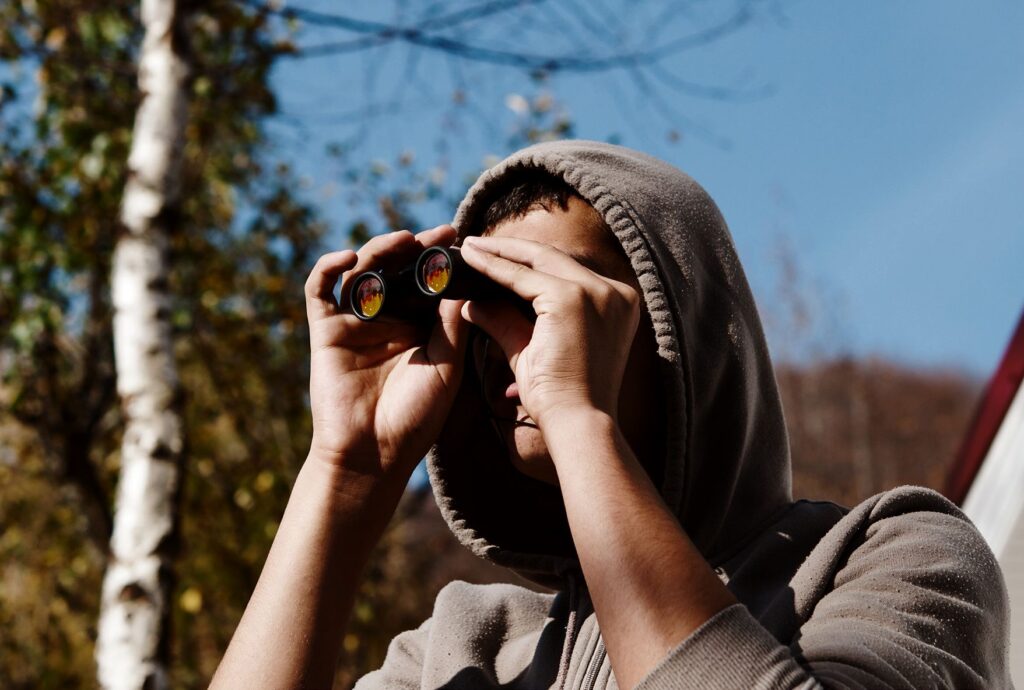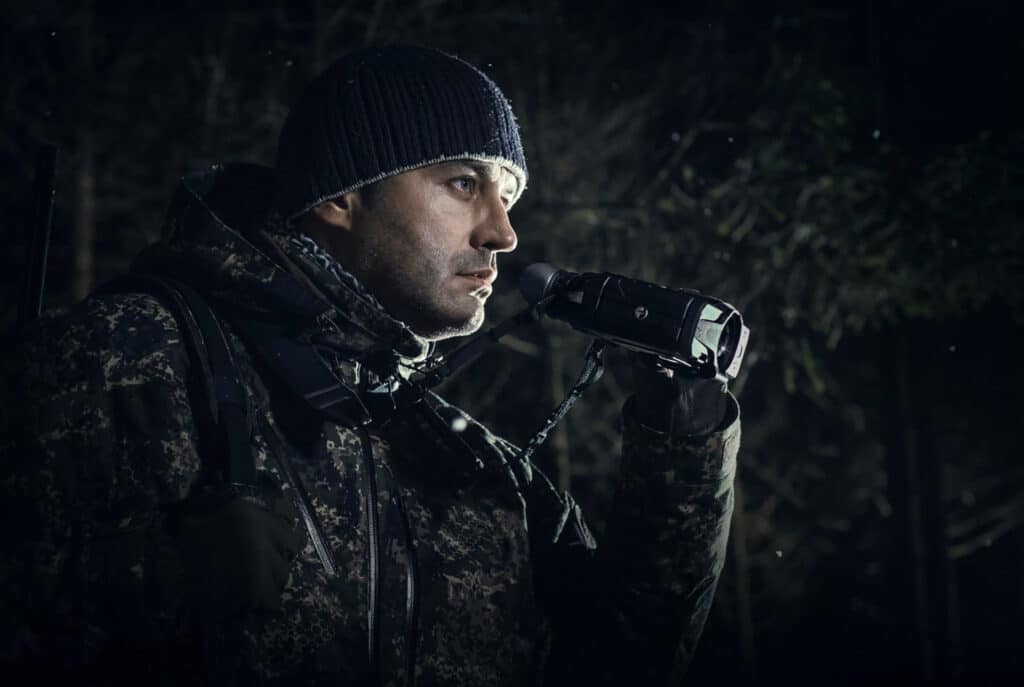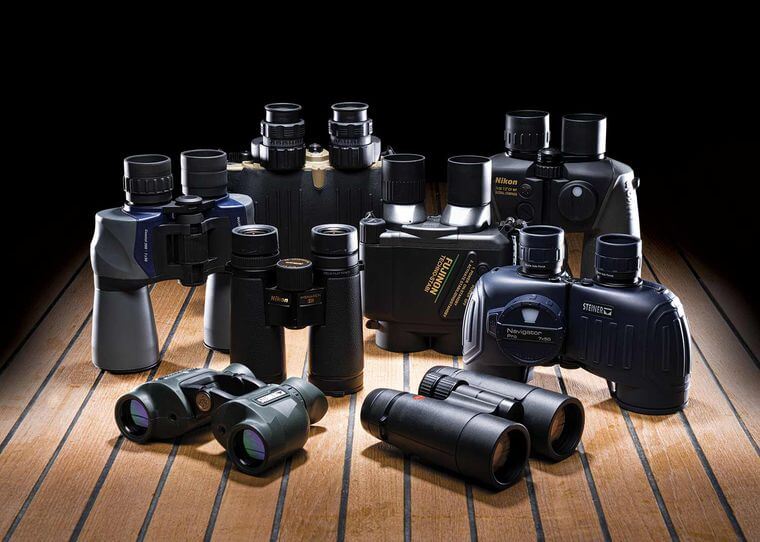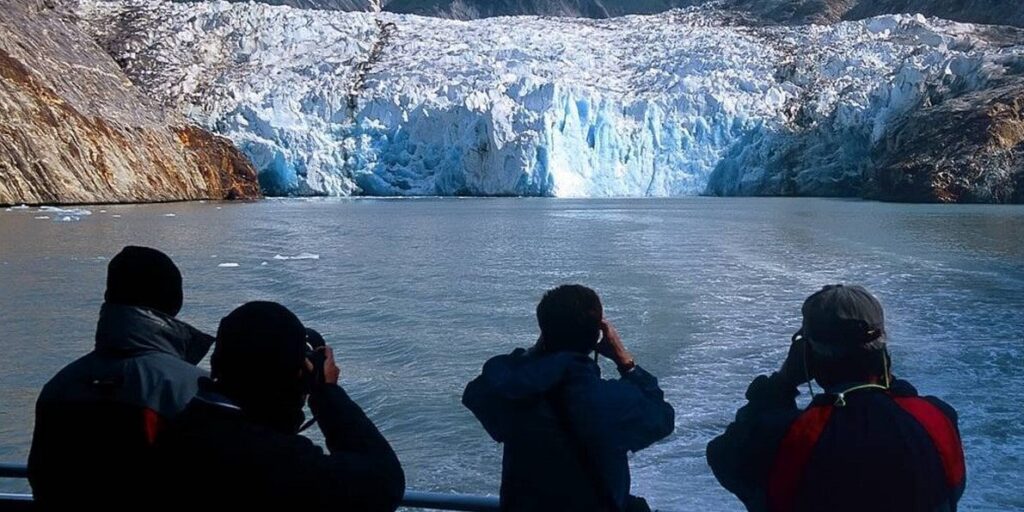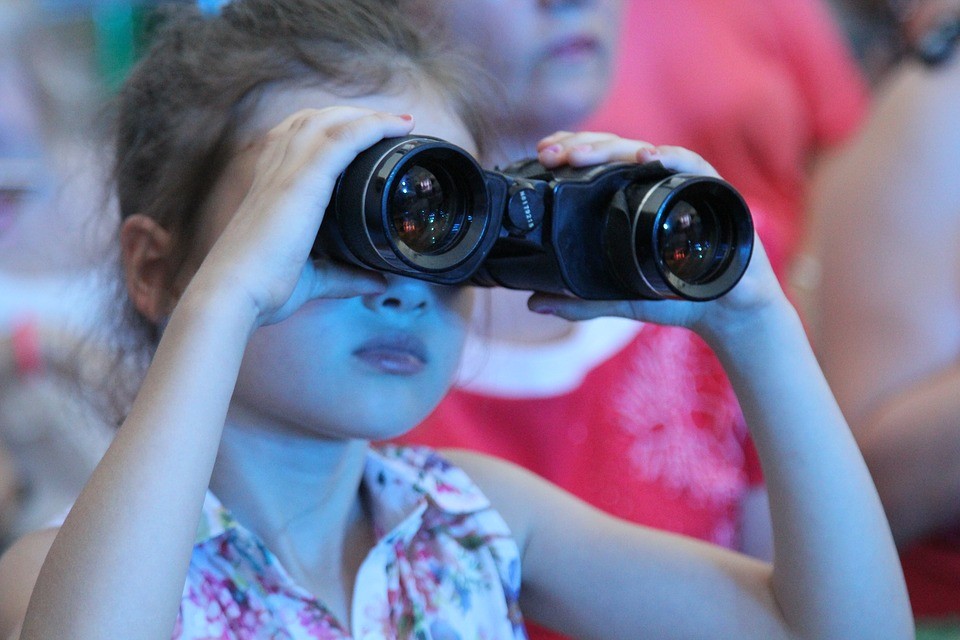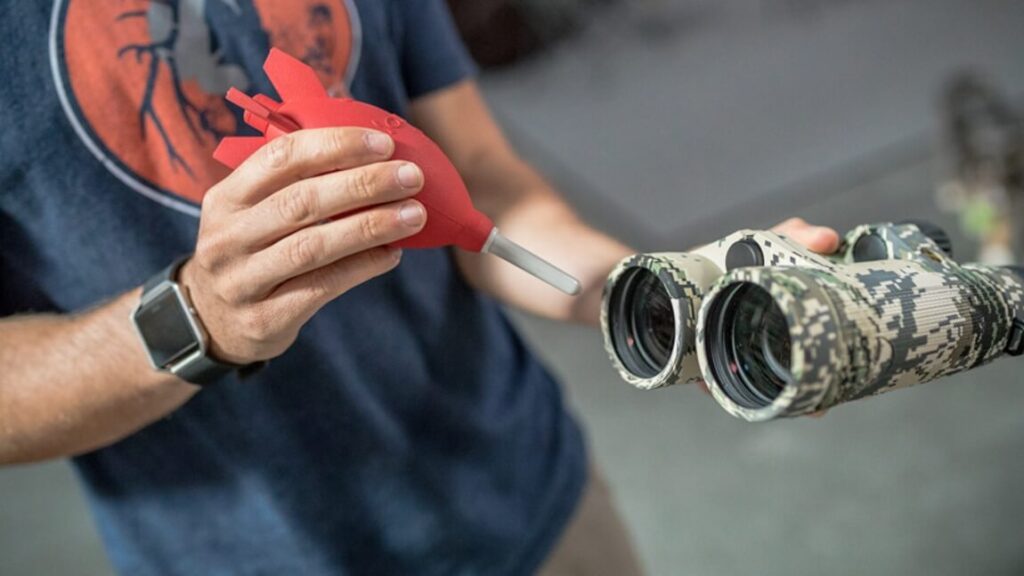

So, you are getting ready for what’s going to be the most epic hike of your life, and you are looking for a stellar pair of binoculars that can take you well past the legal time, but you don’t know whether to choose an 8×32 model or an 8×42 model. The 8×32 vs. 8×42 Binoculars debacle has been going on for long. To know which of the 2 configurations suits you best, it is important that you understand what the numbers on the binoculars mean.
Well, the numbers indicate power and size. An 8×32 binos has a magnification of 8 and an objective lens with a diameter measuring 32mm. This article goes over the key differences between 8×32 vs. 8×42 Binoculars. The information should help you choose the right configuration for your interests, whether it is birding, wildlife observation, safari, nighttime hunting, travel, or general usage.
Essentially, the numbers or specs on binoculars mean their power and size. The first number usually means the magnification power of the binos, while the second number means the diameter size of its objective lens. A pair of binoculars with the specs 8 x 42 has a magnification power of 8 and a 42mm wide objective lens. The objective lenses are the ones closest to what you are viewing.
The objective lens size is an indication of how physically big the binoculars are, and they also determine the amount of light the binoculars can gather. These numbers should help you choose the best binoculars for what you intend to use them for. For instance, if you want binoculars that you can use up to very late in the evening when there is very little natural lighting, then you have to go for a unit with a large objective lens. For stargazing or using on a moving boat, magnification matters more.
Here are the critical differences between 8×32 vs. 8×42 Binoculars:
8 x 42 binos are larger than 8 x 32 binos because the objective lens determines the physical size of the binoculars. 42mm is larger than 32mm by 10mm. An 8 X 42 is, therefore, a larger instrument. If you compare 2 models from the same brand, you may notice other physical differences like length and weight. The 8 x 32 is likely to be shorter and lighter than the 8 x 42.
The relationship between the size of the shaft of light exiting the ocular lenses and your eye pupils’ size anytime can be used to explain the difference in low light capabilities between an 8 x 32 binos and an 8 x 42 binos.
An 8×32 binos produces a 4mm exit pupil, while an 8×42 produces a 5.25mm exit pupil. The exit pupil is basically the objective lens divided by the magnification. In perfect light conditions, your eyes’ pupils are likely to be smaller than the exit pupil produced by both 8×32 and 8×42 binoculars. This means that they both deliver more than enough light to the eyes to enable the user to see a bright image.
When the lighting conditions get less bright, your pupils begin to enlarge. In very low lighting conditions, your pupils can enlarge up to 7mm in diameter. In such conditions, the amount of light your eyes are receiving is less than ideal. Binoculars with larger exit pupils, in this case, the 8×42 will give you a brighter and clearer image.
Another advantage of a larger exit pupil is that it gives you an easier time lining up your eyes with the light exiting the eyepieces. A novice user will find an 8×42 easier to use as they will effortlessly get an image without black rings on the view’s edges.
An 8×42 binos has a larger surface area that can capture more light than an 8×32 binos. With binoculars, the more the light, the better the image quality, and 8×42 binoculars have brighter and clearer images than 8×32 binoculars.
The ability to capture more light doesn’t always translate to brighter higher quality images. The binoculars must have a high light transmission rate even if they have a large objective lens for high-quality images. According to experts Trusted Source The ULTIMATE Low-Light Binoculars Buying Guide - Optics Trade Blog If you are unsure of which binoculars are the top choice for you, we put together a Low-Light Binoculars Buying Guide to help you choose. www.optics-trade.eu , the light transmission rate is the best indicator for how well binoculars can perform in low light conditions.
For binoculars to perform well in very low light conditions, their light transmission should be great but below 550nm of wavelength. Anything above this wavelength is insignificant. No human eye can see warm colors at night. Another thing worth noting is that binoculars can have a high light transmission rate value but have poor detail rendering because of poor internal reflections. In such a case, your eyes would obtain a lot of useless light with few details.
Transmittance is determined by optical coatings, build quality and glass quality. This is why you can have 2 different 8×42 binoculars from different brands with different image quality. You may be left wondering why one has such bad images while the other is stellar.
With ambient light conditions, it can be hard to differentiate between 8×32 binoculars and 8×42 binoculars. During the day with normal lighting conditions, a high quality 8×32 binocular can capture and transmit adequate amount of light to your eyes, allowing you to get bright top-quality images.
On the flip side, when the light level is not optimal, like after sunset or before sunrise, you will easily see the difference between the 2 binoculars. Let’s say you are in a forest or dense woodland with both the 8×32 and the 8×42, you will get brighter images from the larger lenses because of its ability to capture more light. Therefore, if you need a pair of binoculars to use in low light conditions, you better go for larger lenses or dedicated night vision binoculars. Trusted Source Night vision goggles and binoculars - All About Vision Night vision goggles and binoculars can be a handy way to see things in the dark. Find out more about these devices and what they’re used for. www.allaboutvision.com
8×42 binoculars are larger than 8×32 binoculars because of the extra material used to make their larger lenses chassis. These materials also make them heavier. Take for example the 2 popular 8×42 and 832 binoculars, Frontier ED X. The larger version weighs 25 ounces, while the smaller version weighs 19 ounces. The smaller version is about 25% lighter.
The two binoculars have the typical mid to high-end binoculars weight. Binoculars in this range usually have their chassis made of magnesium as the main component and other metal components for the eyepiece and focus wheel housings.
Low-end or cheaper binoculars are usually more lightweight because of the materials used to build them. Most of them have their chassis and other part made of polycarbonate plastics which is remarkably lightweight and cheaper to produce. Therefore, when making a decision, ensure your choice strikes a balance between weight and strength or durability. You don’t want binoculars that weigh you down, and at the same time, you don’t want binoculars that wouldn’t last you many uses.
8×42 binoculars are usually a little pricier than 8×32 binoculars. The price differences depend on the brand and where in the world you intend to purchase the binoculars. The price differences tend to be between 5 and 20% for models within the same range. You cannot compare the price of a high-end 8×42 binoculars with that of a low-end 8×32. They have to be within the same range in terms of quality.
If you are looking to get an 8×42 binocular and have no idea where to look, check out the popular Celestron Outland X. it is a mid-sized waterproof model with superior optics. It offers an unmatched visual experience with great features and a superb build quality typical of all Celestron binoculars.
For an 8×32 binocular, the Wingspan Optics is a prime option. It remains the most acclaimed 8×32 model because it offers wide, bright and clear views. Plus it is incredibly lightweight, perfect for a fun-filled day of bird watching.
Our 8×32 vs. 8×42 binoculars showdown clearly shows that none is better than the other. Choosing either of the binoculars comes down to your specific needs. If you want binoculars to use in low light conditions like a dense forest, then the 8×42 is more suitable because it captures a lot of light and has a large exit pupil. Also, if you are a novice, you’d be better off with the 8X42 binoculars because you don’t have to go through the hassle of lining your eyes correctly to get the best quality images.
On the other hand, if you need a compact and easily portable instrument then the 8×32 is your prime option. Just ensure they have high-quality optics so they can hold their own in poor light conditions.
